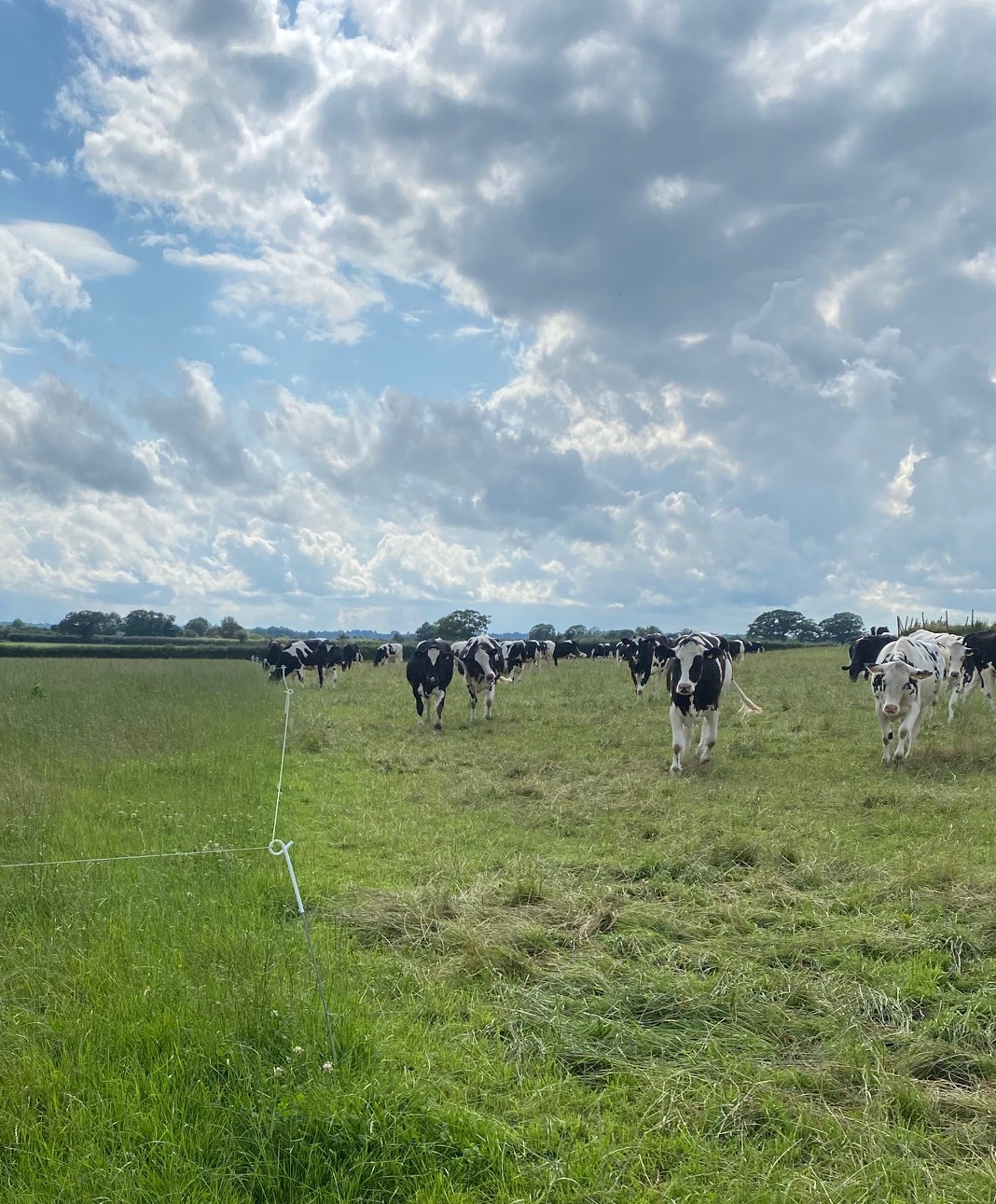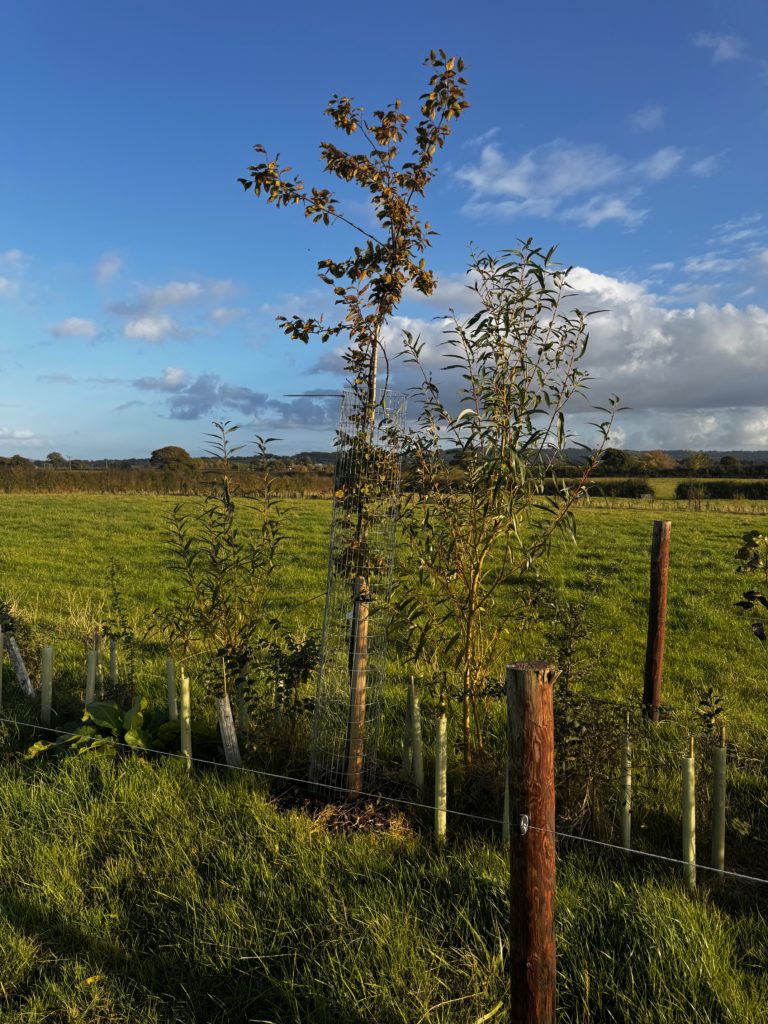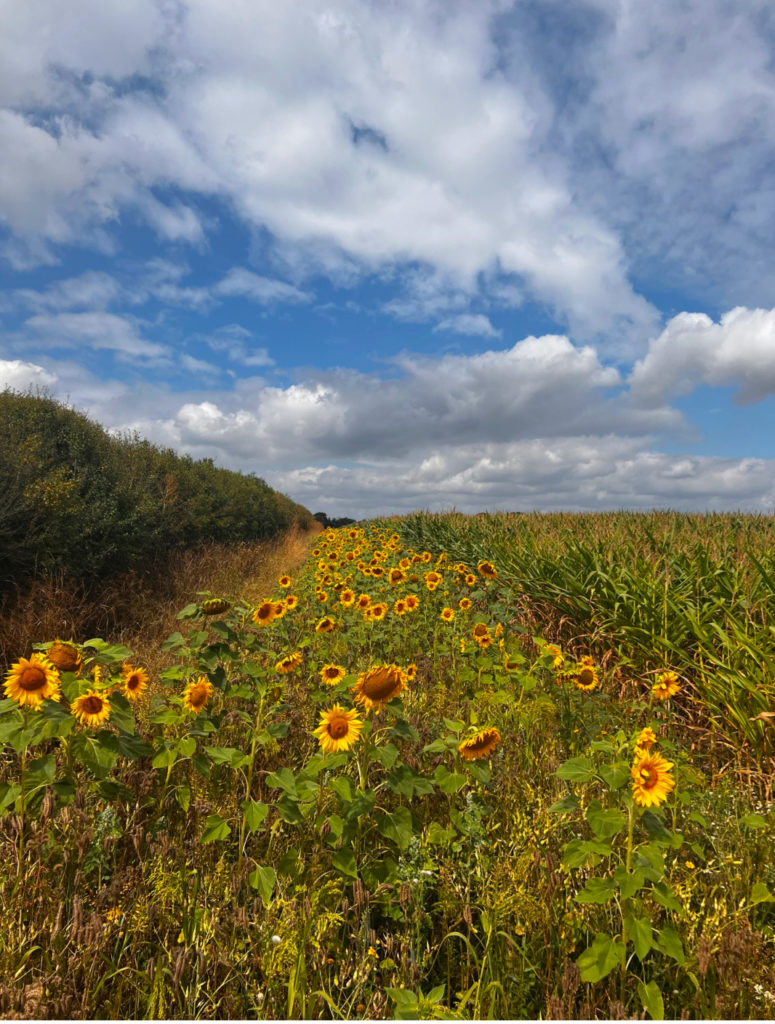
“When we first came the farm was quiet, but now you hear birds all the time. You go up the drive and see 50 goldfinches flying up. The contractor said the life coming out of the hedges was like nothing he’d seen before” says Stuart Rogers.
Such are the changes in farm management that Suart and his family have implemented at Longmoor Farm in Dorset, they are managing to balance high milk yields with improving soils and biodiversity. This is an interesting example of a farm that appears to balancing both financial and environmental sustainability well.
Longmoor is a dairy farm with 250 cows, averaging 11, 500 litres per year each. The farm is 300 acres, rented from the Duchy of Cornwall. Such systems are commonly dependent on high inputs of feed and fertiliser, but Longmoor has taken a different approach. No fertiliser has been applied to grassland for over 5 years and the pastres are thriving. Through extensive herbal leys and high stocking sensities for short periods, Stuart remarked “it’s easy to get stuck in the trap of reseeding 25% of the farm each year – it just doesn’t work long term.”
Wildlife and carbon
The farm has improved both the wildlife quality and quantity, and the carbon stored in soils, trees and hedges. Hedges have been allowed to grow up and out, including in hedge trees; this both sequesters carbon and provides habitat for wildlife.
Bringing more trees in to the fields has been achieved by new agroforestry rows, consisting of 1.4km of new trees including willow, poplar, maple, hornbeam, oak, wild cherry, and hawthorn. In addition to carbon and biodiversity, these provide shade for cows and even some extra food.

Floral field margins are particularly aesthetic and are rich hunting ground for owls, and indicator species for healthy habitat. On some additional land owned by Stuart, woodland has been planted and ponds created, so wildlife is clearly a passion of his.

Flower margins around fields
Soils are the key
“The plough is a heavy reset that asks a lot from the soil and is very high risk“, comments Stuart. At Longmoor no ploughing has been done for five years. Maize, grown to feed to farm’s dairy herd, is established by strip tilling through a cover crop without using herbicides, direct drilled.
Stuart remembers: “walking on ploughed land you would sink right in after cultivation,
but it was easy to walk on the strip till land”.

The changes stacking up…
The new approach to farming at Longmoor have led to a list of real wins:
- No fertiliser on grassland for five years
- No ploughing for five years
- 1.4km of agroforestry trees planted
- Hedges wider and higher
- Fertiiser reduced on cropland by 35-40%
- Milk yields at 11, 500 litres per cow per year
The combined impact of these is to reduce carbon emissions, increase carbon sequestration, improve wildlife, remain profitable, and sustain interest and enthusiasm for Stuart and his team.
